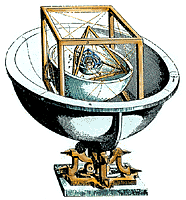
COMPARING FORM AND STRUCTURE
Although modern methods have moved towards quantitative analysis of characteristics
unseen to the naked eye, form and structure are still studied to generate knowledge.
However, unlike the role of visual correspondence in the earlier period, similarity is
now seen as accidental.
 Some things which appear to be similar on the surface are now known to be entirely
different structurally, and vice versa. One example of this, which we used in our
display, is the comparison of Alabaster and Gypsum. Modern analysis of these rocks has
revealed similarities unknown in the sixteenth century. On the surface, these two
rocks appear completely different: one clear and crystalline, the other opaque and
layered. In reality, they are different forms of the same mineral, formed and deformed
by different geological processes.
Some things which appear to be similar on the surface are now known to be entirely
different structurally, and vice versa. One example of this, which we used in our
display, is the comparison of Alabaster and Gypsum. Modern analysis of these rocks has
revealed similarities unknown in the sixteenth century. On the surface, these two
rocks appear completely different: one clear and crystalline, the other opaque and
layered. In reality, they are different forms of the same mineral, formed and deformed
by different geological processes.
On the other hand, our display of cubes used by different departments suggests that
just as in the sixteenth century, repetition of forms across disciplinary boundaries
is common, although these same forms tend to be used for different ends. The cube, the
most basic geometric form, seems to show up in every field in some way. Salt molecules
are cubes; psychologists test intelligence with cubes (and round holes); artists study
cast shadows using cubes.
 |
{Essays} {Gallery} {Microcosms} |
 |